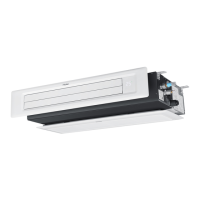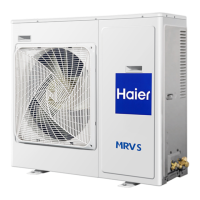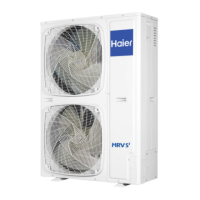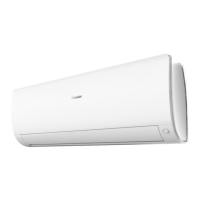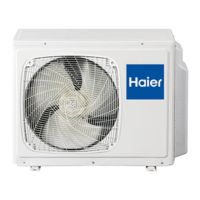249
The high-pressure gas pipe, suction gas pipe, liquid pipe must be provided with reliable thermal insulation. In the
absence of thermal insulation, liquid leakage may happen.
The outdoor unit is already lled with refrigerant.
To connect the pipes to valve box or remove them from valve box, do use both spanner and torque wrench, as
shown in the Fig.6.
Apply refrigerant oil to outside of the are. Screw it for 3 to 4 rounds with hands and then tighten it.
Determine the tightening torque. (Excessive tightening may damage the nuts and hence cause leakage)
Check the connecting pipes for gas leakage and then x the thermal insulation, as shown in the in the Fig.7.
Only use sealing gasket to wrap the part jointing between the gas pipe and thermal insulation.
For pipe cutter and are tool, please use R410A special tools.
Paste the refrigerant oil here
Torque spanner
Spanner
Pipe joint
Cone nut
Fig.6
Fig.7
Liquid pipe
Gas pipe
Heat insulation (accessory)
Heat insulation (accessory)
(for gas pipe)
(for liquid pipe)
Middle size seal cushion (accessory)
(Use seal cushion to bind the pipe joint)
<Notes>
Please do not let any type of gas other than the specied refrigerant go into the refrigeration system;
In case of refrigerant leakage during operation, please replace the gas. (Fill the refrigerant at the outdoor unit)
Select piping material
• Make sure both the internal surface and external surface of the pipes are intact and are free from harmful
contaminants such as sulphur, oxide, foreign matter, cutting powder, grease and water.
• Please use the following materials for refrigerant pipe.
Pipe material Phosphorized copper seamless pipe for air conditioner (TP2)
Model VP4-450B
Function
High pressure gas pipe 1-1/8”
(
28.58
)
Suction gas pipe 1-1/8”
(
28.58
)
Liquid pipe (outdoor side) 5/8”
(
15.88
)
Gas pipe (indoor side) 5/8”
(
15.88
)
Liquid pipe (indoor side) 3/8 (9.52)
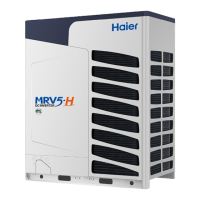
